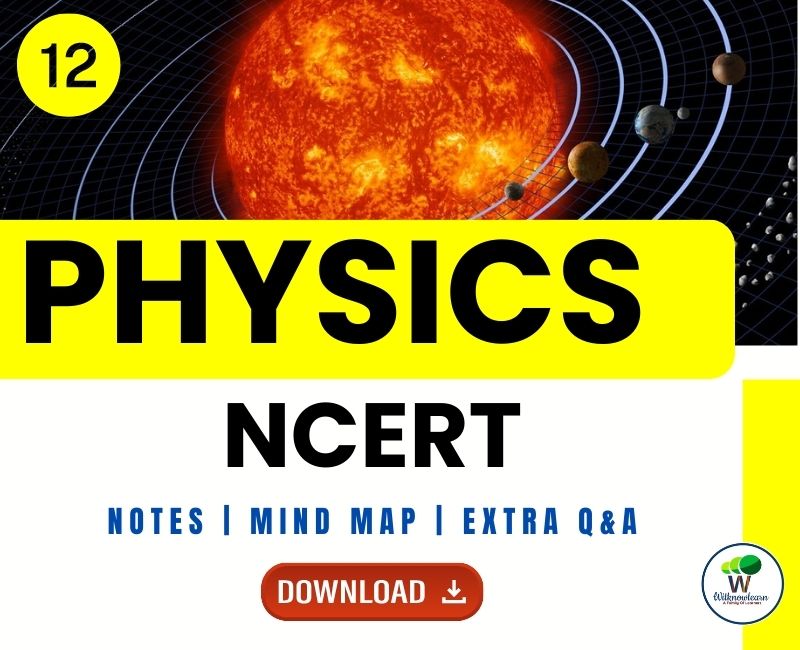Alternating Current class 12 Notes, Mind map And Extra Questions Answers
Welcome to our comprehensive guide on Alternating Current class 12 notes, mind map, and extra questions answers. If you're a student studying electrical engineering or simply interested in understanding the principles of alternating current, this article is sure to provide valuable insights. In this guide, we've compiled well-organized and concise class 12 notes on alternating current, covering all the essential topics you need to know.
Whether you're struggling to grasp the fundamentals or just need a refresher, our notes are designed to help you succeed. Additionally, we've included a mind map that visually represents the key concepts and their connections, making it easier for you to absorb and remember the information. Our mind map is a valuable tool for visual learners, helping you make sense of abstract concepts and see the bigger picture.
To further enhance your understanding, we've also included a selection of extra questions and answers. By practicing these additional questions, you'll be able to test your knowledge and reinforce your understanding of alternating current principles. Get ready to dive into the world of alternating current with our comprehensive guide. Let's unravel the mysteries of this fascinating subject together!
Class 12 Physics Chapter 7, titled Alternating Current, is a vital component of the Class 12 physics curriculum, offering students a detailed exploration of the principles and applications of alternating current (AC). The Alternating Current Class 12 notes are an invaluable resource for students, providing comprehensive insights into the chapter's concepts. These notes, available in various formats like handwritten PDFs and digital downloads on platforms such as WitKnowLearn, cater to the diverse learning preferences of students.
In Alternating Current Class 12th, students learn about the fundamental differences between alternating current and direct current (DC), how AC is generated, and its practical applications in daily life. The notes include detailed explanations of key concepts like the AC generator, phase difference, RMS value, and the role of inductors and capacitors in AC circuits. The Alternating Current Class 12 All Formulas sheet is particularly beneficial for students, summarizing crucial formulas that are essential for solving numerical problems.
For those preparing for board exams or competitive exams, the Alternating Current Class 12 MCQs and extra questions provide an excellent opportunity for self-assessment and practice. These resources help in reinforcing the understanding of concepts and in application-based learning.
The Alternating Current Class 12 Numericals PDF is a collection of practical problems that enable students to apply theoretical concepts to real-world situations. Additionally, the Alternating Current Class 12 Mind Map offers a visual summary of the chapter, aiding in quick revision and better retention of concepts.
Furthermore, the availability of Alternating Current Class 12 PDF notes makes it convenient for students to access and study from anywhere, enhancing their learning experience. With these comprehensive study materials, students can effectively grasp the complexities of alternating current, preparing them thoroughly for their exams and future endeavours in the field of physics and engineering.
Understanding the Basics of AC Alternating
Current (AC) is a type of electrical current where the flow of electric charge periodically reverses direction. In AC, the voltage level also reverses along with the current. AC is the form of electric power most commonly used in homes and industries, primarily because it is more efficient for long-distance transmission.
Advantages of AC over DC
AC has several advantages over Direct Current (DC). It can be easily transformed to different voltages, making it ideal for long-distance transmission, as high voltages can be transmitted with less energy loss and then reduced to a safe level for home use. Also, AC generators are generally more robust and cheaper to build than DC generators.
AC Circuit Components and Terminology
AC circuits include components like resistors, inductors, and capacitors. These elements have unique impacts on the AC current and voltage. Terms such as impedance (resistance in AC circuits), reactance (resistance offered by capacitors and inductors), and phase difference (the difference in phase between the voltage and current) are crucial in understanding AC circuits.
AC Waveforms and Their Characteristics
AC waveforms are typically sinusoidal, as this shape allows for efficient energy transfer. The key characteristics of AC waveforms include amplitude (or peak value), frequency (the number of cycles per second, measured in Hertz), and phase (the progress of the wave over time).
AC Circuit Analysis Techniques
Analyzing AC circuits involves understanding the complex relationship between current, voltage, and impedance. Techniques such as phasor diagrams and using complex numbers are employed to simplify these analyses.
Resonance in AC Circuits
Resonance in AC circuits occurs when the inductive and capacitive reactances are equal and cancel each other out, leading to a purely resistive impedance at a particular frequency. This is a crucial concept in tuning radio and television receivers.
AC Power Calculations and Measurements
AC power calculations involve determining the real, reactive, and apparent power in circuits. Power factor, which is the ratio of real power to apparent power, is a key measurement in AC circuits, indicating efficiency.
Applications of AC in Daily Life
AC is used extensively in daily life, from powering household appliances to industrial machines. Its ability to be easily converted between high and low voltages makes it ideal for powering homes and businesses.
Conclusion and Additional Resources
AC is a fundamental concept in electrical engineering, with broad applications. For further study, resources like textbooks, online courses, and electrical engineering forums provide deeper insights into AC and its applications. Experimenting with simple AC circuits and components can also enhance understanding.





